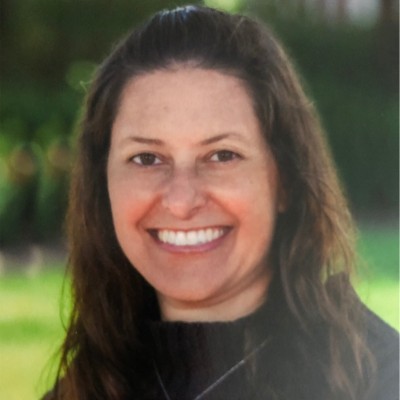Debra Jacoby, J.D., graduated from Syracuse University in 1999 with a B.S. in Inclusive Elementary and Special Education and Art History. She is currently a Master Teacher of Intellectual Property and Invention Education working with the United States Patent and Trademark Office.
 As an elementary educational technologist and computer science teacher, Jacoby is a frequent speaker on curriculum integration for STEM, technology, maker movement, and invention education topics. She has written several articles for Edutopia, founded by the George Lucas Foundation, as well as a book chapter on “Augmented Reality and Social Emotional Programming” in Augmented Reality at School: A Practical Guide for Educators (Clever Books, 2019).
As an elementary educational technologist and computer science teacher, Jacoby is a frequent speaker on curriculum integration for STEM, technology, maker movement, and invention education topics. She has written several articles for Edutopia, founded by the George Lucas Foundation, as well as a book chapter on “Augmented Reality and Social Emotional Programming” in Augmented Reality at School: A Practical Guide for Educators (Clever Books, 2019).
Jacoby is a past Equal Justice Works fellow for Education Law and has won a Mouscarit from Disney’s Animal Kingdom for her work in Conservation Education. Her students’ work has won a variety of design, robotic, and engineering awards over the years.
Describe your current roles and its responsibilities.
My current role is a combination of teaching and offering professional development. In the classroom, I teach second- to fifth-grade computer science. For our educators, I offer everything from one-on-one trainings to full-scale presentations on the latest trends in technology and curriculum integration on innovative topics.
My favorite moments are when students connect or create things using tools I’ve taught them. When I see that sparkle in their eyes when they connect a circuit to their code, it’s really magical.
How did the School of Education prepare you for this role?
SOE really taught me how to integrate curriculum and how tools can really help with a variety of learning. My journey may have started as a classroom teacher, but it was my experience in finding tools to reach students that led me to technology integration. I believe there is a tool to teach any type of topic.
Since SOE demonstrates how tools can work for all types of learners in its inclusion program, I’m not sure I would be where I am now if not for some of the practical, interactive lessons that I observed while training at SOE.
What current trends do you see in your specialty and how are you addressing them?
The funny thing about being an educational technologist is that our curriculum is always changing. I often joke with my other teacher friends that I never have the same lessons from year to year.
Ten years ago, we were focused on gaming sites and then slowly the movement changed to computational thinking and engineering. The current trend in my specialty is research and testing on how artificial intelligence can be utilized properly with students in the classroom. As a technologist, I believe in the use of tools. I also believe in teaching students and adults to improve their workflow using equipment that lets them work smarter, not harder.
One of the ways my school is addressing trends in AI is by running several pilot programs at the same time. Each of our leaders is taking on a different educational artificial intelligence tool and working with teacher stakeholders to evaluate if the tool is useful or wasteful. The group that I am piloting is working with a tool called Curipod, a company based in Norway, which allows educators to create and deliver interactive lessons.
Which faculty members stood out for you most as a student at SOE?
There are so many amazing educators who taught me to push my teaching at Syracuse. At the top of my list is Professor Mara Shapon-Shevin because I didn’t even know what inclusion was before attending Syracuse. It really opened my eyes to a variety of diversity issues and how we can teach all types of learners in the classroom.
One of my takeaways was different styles of teaching. Professor Kathy Hinchman showed me that literacy skills could be integrated throughout your day and not just during reading. Dean Douglas Biklen taught me that there are so many ways to communicate with those who may not be able to.
Professors Patricia Tinto and Joanna Masingila taught me that math could be fun as I was previously never exposed to hands-on lessons prior to Syracuse. I’ll never forget the activities they set up for us to work with fifth-grade students in the Dome to solve distance equations.
Make a pitch for SOE—why should a prospective student choose the School of Education?
SOE makes you a valuable teacher. One of the reasons I chose Syracuse is because I was able to graduate with multiple certifications as an undergraduate: Preschool, Special Education, and Elementary Education. We were also required to have a liberal arts specialization, which I turned into a major (Art History.)
Attending SOE prepared me to be flexible because we were given so many experiential learning experiences. My first classroom experience was in my freshman year, and I had some sort of exchange with young students during almost every semester. Having a variety of placements allowed me to jump into work with a variety of types of learners.
